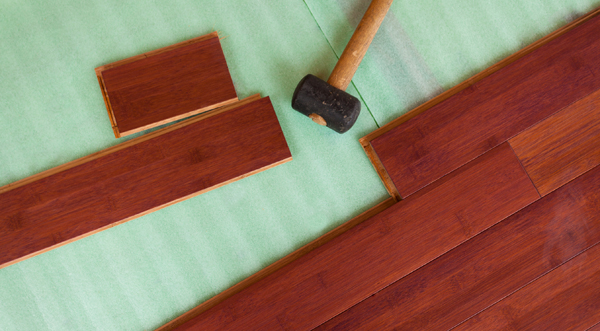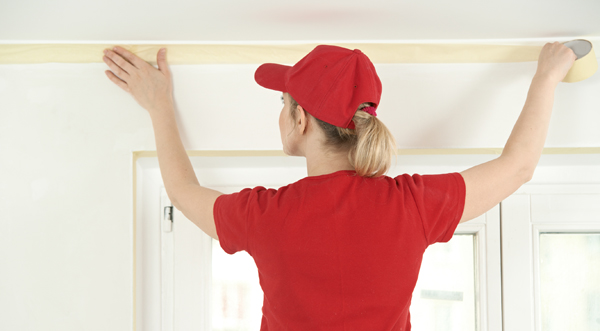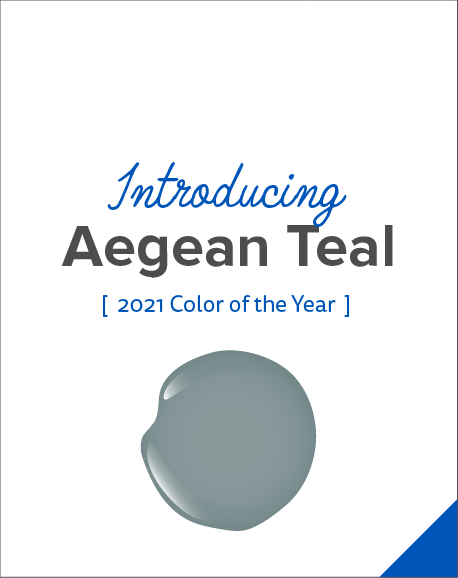By Tammy Adamson-McMullen
If you’re in the market for new floors and want your home to be “green” from top to bottom, you’re in luck: “Green” flooring options are plentiful in 2019! Flooring companies increasingly are using sustainable and recycled materials in all types of flooring. And over the years they’ve greatly improved their manufacturing processes to eliminate toxins and produce fewer VOCs.
Here are some of the “greenest” choices to consider:
Bamboo
No discussion of eco-friendly floors can exclude bamboo, one of the “greenest” of flooring options. Bamboo is sold as a hardwood but is actually is a grass that replenishes itself. Each bamboo plant sends up shoots that grow quickly and can be harvested without killing the parent plant. For this reason, bamboo is extremely sustainable. It also is hard and durable, making it a perfect choice for active families with children and pets.
To purchase the “greenest” flooring in this category, look for bamboo that is grown without fertilizers or pesticides and is VOC- and formaldehyde-free in its manufacturing and finishing processes. Also check if the bamboo is certified through the Forest Stewardship Council (FSC). Hailed by environmental groups, FSC offers certification for cork and hardwoods, too.
Cork
Cork is another highly sustainable product. Cork is harvested from the outer bark of standing trees, which are able to regrow the removed layer. To create cork flooring, manufacturers grind up the cork, compress it and bond it with resins. The result is a product that is durable like bamboo but surprisingly soft underfoot. Cork offers additional eco benefits:
· Cork has special antimicrobial properties created by alternating layers of wax and suberin (a rubbery polyester biopolymer). These protective layers resist the growth of mold and mildew and repel insects.
· Cork is hypoallergenic—repelling dust, hair, etc.—and actually improves indoor air quality.
· Because it has millions of air-filled holes, cork is highly insulative and can actually reduce energy costs.
One note of caution: Because cork is an organic material, it can rot in standing water. So avoid putting it in “wet” areas, such as bathrooms and leaky basements.
Hardwoods
One eco-friendly advantage of hardwoods is that they last a long, long time. However, not all hardwood floors are created equal. To make the “greenest” choice, avoid rare and exotic woods and choose from those in more abundance, such as oak, maple, cherry, walnut and pecan. Pine is another great option because it grows more quickly than other deciduous trees.
Regardless of wood type, make sure that the wood flooring you’re considering has been sustainably harvested, was manufactured with non-toxic adhesives and finishes, and is low in VOCs. To be “greener” yet, consider engineered hardwood rather than solid wood flooring, which has more wood in the final product.
Carpets and Rugs
This category has many natural, renewable materials to choose from, including organic wool, organic cotton, jute, sisal, seagrass and coir. Organic wool in particular has become a very popular carpet choice and—like hardwood floors—can last a lifetime if cared for properly.
Whatever the material, be sure to purchase the highest-quality carpet you can afford. Additionally, look for a label by the Carpet and Rug Institute’s (CRI) Air Quality testing program ensuring that the carpet has passed low-emissions standards. Choose carpet pads that are made from natural materials—felt rather than styrene-butadiene rubber, for example—and ask installers to use a non-solvent adhesive.
Resilient/Laminate/Linoleum
Can resilient, laminate and linoleum floors really be eco-friendly? In a word, yes! Many of today’s products are lower in VOCs—a feat achieved through eco-friendy printing and adhesive processes—and made from renewable materials and recycled content. As a quick primer, resilient flooring is a combination of natural and synthetic materials. Laminate flooring has a hard, printed laminated surface and a fiberboard core bonded with melamine resins. Linoleum is made entirely from natural, biodegradable materials.
When selecting from this category, consult with your retailer to make sure you’re getting the “greenest” product available. You might also look for LEED (Leadership in Energy and Environmental Design) certification, one of the most widely used “green” rating systems in the world. And again, make sure installers are using eco-friendly products and practices.
Tile
Recycled tile is getting a lot of attention these days, and for good reason. Tile manufacturers increasingly are making beautiful and durable products from renewable and recycled materials, such as scrap glass, scrap ceramics and porcelains, fine residues leftover from industrial sand processing and more.
But tile in general is an eco-friendly choice. Arizona Tile makes a convincing argument for this point on its website, noting that the majority of tile manufacturers have “closed-loop” facilities that reuse materials and water. Additionally, because tiles are kiln-fired at very high temperatures, they don’t emit any VOCs in the spaces where they’re installed. And since tile is manufactured throughout the United States, the product can be locally sourced rather than being shipped from overseas—thus reducing its carbon footprint. Last but not least, tile is virtually maintenance-free and usually can be cleaned with nothing more than water. The bottom line? It’s fairly difficult not to be “green” in this category!










